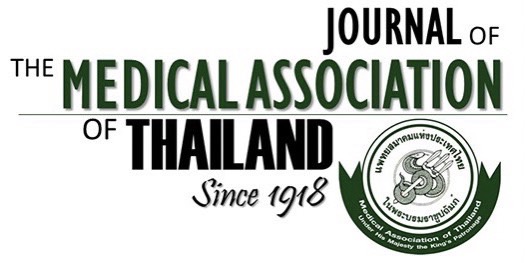Prevalence of Prostate Cancer in Aging Males Receiving PSA (Prostate Specific Antigen) Screening Test (A Campaign for Celebration of Siriraj Established Day)
Sittiporn Srinualnad MD, FRCS (Glasgow)*, Chamaiporn Charoenkraikamol BSc**, Srisuda Toraksa BSc**, Mongkol Uiprasertkul MD***, Teerapon Amornvesukit MD*, Tawatchai Taweemonkongsap MD*, Suthipol Udompunturak MSc****, Chaiyong Nualyong MD*, Anupan Tantiwong MD*
Affiliation : * Department of Surgery, Faculty of Medicine, Siriraj Hospital, Mahidol University ** Registered nurse Outpatient Department (Surgical Division), Faculty of Medicine, Siriraj Hospital, Mahidol University *** Department of Pathology, Faculty of Medicine, Siriraj Hospital, Mahidol University **** Clinical Epidemiology Unit, Office for Research and Development, Faculty of Medicine, Siriraj Hospital, Mahidol University
Prostate cancer is a potential men’s health problem. The prevalence of prostate cancer continues to
rise. Serum PSA (Prostate Specific Antigen) can be used as a screening tool for detection of early prostate
cancer. However, a screening program for prostate cancer has not yet been accepted as cost-effective and long
term survival benefits have not been shown. Nevertheless, some doctors request PSA testing in men who
present with lower urinary tract symptoms (LUTS) to detect prostate cancer.
Objective : To study for prevalence of prostate cancer in healthy men seeking medical check-up for prostate
cancer.
Materials and Methods : During the anniversary celebration of Siriraj established day (26/07/1888), a cohort
study of Prevalence of prostate cancer in aging males using PSA Screening Test was carried out, 200 men over
45 years of age were invited to PSA testing and prostate glands check-up including, IPSS (international
prostatic symptoms score), QOL(quality of life score) and DRE (digital rectal examination). Patients with
elevated PSA were advised to undergo transrectal-ultrasound-guided-biopsy of the prostate (TRUS-biopsy).
Cancer detection rate was calculated according to symptoms described by patients, IPSS and age groups.
Data was compared using Chi-Square test.
Results : Median values from data of men’s ages, IPSS, QOL and PSA were 63 years, 11, 2, and 1.23 ng/ml,
respectively. 9 of 200 patients (4.5%) were found to have prostate adenocarcinoma on biopsy. Most of the
cancer cases showed a localized lesion. Prostate cancer was found more common in patients who described
themselves as having abnormal urination. There was no prostate cancer found in patients with a mild degree
of LUTS (IPSS less than 8). Prostate cancer tended to be more common in men with high IPSS.
Conclusion : Screening prostate cancer by PSA testing detected the cancer in 4.5 %. Most cancers were found
on symptomatic patients. Patients with LUTS should be made aware of prostate cancer and PSA testing may be
offered in such patients. However screening of prostate cancer in all men regardless of symptoms must wait for
a larger study looking at long term survival benefit, cost-effectiveness of screening, and lastly, quality of life of
patients on a screening program.
Keywords : Prostate cancer, Prevalence, PSA, IPSS



